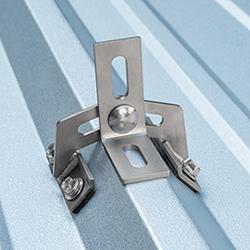Oil, Gas Prices Soar;Alliance to Save Energy Urges Drivers to be More Fuel Efficient
With global oil and U.S. gasoline prices reaching new highs, the Alliance to Save Energy urges motorists to be more fuel efficient to benefit the nation's energy security as well as their own pocketbooks.
With global oil and U.S. gasoline prices reaching new highs on worries about Middle East violence and pipeline explosions in Nigeria leading to supply disruptions, the Alliance to Save Energy urges motorists to be more fuel efficient to benefit the nation's energy security as well as their own pocketbooks.
The Alliance's tips for proper vehicle maintenance and sensible driving habits can boost gas mileage, leaving more money for other essential and discretionary purchases:
Save with Proper Maintenance
· Fixing a car that is noticeably out of tune or has failed an emissions test can improve its gas mileage by an average of 4 percent, though results vary based on the kind of repair and how well it is done.
· Fixing a serious maintenance problem, such as a faulty oxygen sensor, can improve mileage by as much as 40 percent.
· Improve gas mileage by around 3.3 percent by keeping tires properly inflated. Under-inflated tires can lower gas mileage by 0.4 percent for every 1 psi drop in pressure of all four tires. Properly inflated tires also are safer and last longer.
· Use the manufacturer's recommended grade of motor oil to improve gas mileage by 1-2 percent. Also, look for motor oil that says "Energy Conserving" on the API performance symbol to be sure it contains friction-reducing additives.
Driving Mindfully
· Curtail aggressive driving such as speeding and rapid acceleration and braking, which can lower gas mileage by 33 percent at highway speeds and 5 percent around town. Sensible driving is safer, too - so you may save more than gas money.
· Obey the speed limit. While each vehicle reaches its optimal fuel economy at a different speed (or range of speeds), gas mileage usually decreases rapidly above 60 mph. As a rule of thumb, each 5 mph over 60 mph is like paying an additional $0.20 per gallon for gas. Observing the speed limit is also safer.
· If available, use your vehicle's overdrive gear when appropriate to reduce engine speed, which will enable you to save gas and reduce engine wear.
· Use cruise control to help cut fuel consumption by maintaining a steady speed during highway driving.
· Pack lightly when traveling, and avoid carrying items on your vehicle's roof. An extra 100 pounds in the trunk cuts a typical car's fuel economy by up to 2 percent.
· Avoid idling, which gets 0 mpg. Cars with larger engines typically waste even more gas at idling than cars with smaller engines.
· Combine your errands into one trip and plan your routes carefully to drive fewer miles and use less fuel - and reduce wear and tear on your vehicle. Several short trips taken from a cold start can use twice as much fuel as a longer, multipurpose trip. Trip planning ensures that traveling is done when the engine is warmed-up and efficient.
Take Advantage of Federal Tax Incentives
· Federal income tax credits of $250 to $3,400 are available in 2006 and 2007 to purchasers of hybrid-electric or diesel vehicles, based on the vehicle's efficiency and fuel savings. Tax credits are dollars deducted from taxes owed. After each auto manufacturer has sold 60,000 hybrids, the credit begins to phase out (Toyota has already reached that threshold), so it pays to put your order in sooner rather than later. See www.ase.org/taxcredits for details, and check out local excise tax reductions and other benefits for hybrid purchasers, too.
Additional Gas-, Money-Saving Measures
· If you own more than one vehicle, drive the one that gets better gas mileage whenever possible. If you drive 15,000 miles a year, driving a care that gets 20 mpg rather than 30 mpg will cost you nearly $750 a more. That's approaching $3,000 extra in fuel costs in just four years!
· Carpool or ride-share. Some urban areas allow vehicles with multiple passengers to use High Occupancy Vehicle (HOV) lanes. Some states grant HOV privileges to drivers of hybrid vehicles traveling solo.
· Use public transportation. Check the American Public Transportation Association's website for local public transit information (www.apta.com/links/state_local/).
· If your employer permits, consider telecommuting or staggering your work hours to avoid sitting in traffic and wasting gas during peak rush hours.
· Protect your health and your pocketbook by walking - or biking -- to your destination whenever possible.
· When buying or leasing a new vehicle, think high gas mileage. Check out the DOE website, www.fueleconomy.gov, for information on fuel-efficient vehicles.
· When renting a car, ask for a model that gets better fuel economy.
####
The Alliance to Save Energy is a coalition of prominent business, government, environmental, and consumer leaders who promote the efficient and clean use of energy worldwide to benefit consumers, the environment, economy, and national security.
Featured Product

QuickBOLT - QB RibRider: Flexible, Fast, and Secure Solar Mounting for Metal Roofs
The QB RibRiderā¢ is an adjustable and easy-to-place mount for exposed fastener and trapezoidal ribbed roofs, combining versatility with robust construction. It features a 90/180 mounting combo with 75mm butyl pads on the base for superior weatherproofing. The RibRider is designed to fit most exposed fastener, trapezoidal, and ribbed metal roof profiles. This mount features stainless steel roof brackets and comes with four #14 x 1-1/4" hex washer self-drilling screws, ensuring a secure attachment to the roof.
